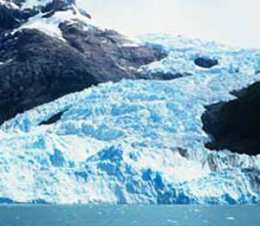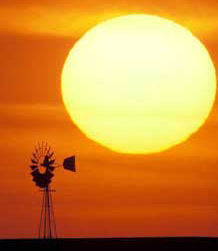Global warming Man made causes
 Coal burned in power stations contains carbon which combines with oxygen in the atmosphere to form carbon dioxide.
Coal burned in power stations contains carbon which combines with oxygen in the atmosphere to form carbon dioxide.
The man-made (or anthropogenic) component of the greenhouse effect is caused by man’s activities that emit greenhouse gases to the atmosphere.
The most important of these is the burning of fossil fuels. Fossil fuels contain carbon, and when they are burnt this carbon combines with oxygen in the atmosphere to form carbon dioxide.
Changes in land use are also important sources of greenhouse gas emissions. For example deforestation results in the emission of carbon dioxide to the atmosphere that was previously stored on the Earth’s surface in the form of trees and other vegetation, or locked up in soils.
 We emit carbon dioxide to the atmosphere in enormous quantities because we burn so much fossil fuel and the changes in land use that we have implement are so widespread.
We emit carbon dioxide to the atmosphere in enormous quantities because we burn so much fossil fuel and the changes in land use that we have implement are so widespread.
This is why carbon dioxide is the most important gas in the man-made component of the greenhouse effect.
What evidence is there that the Earth’s climate is changing?
Widespread decreases in glaciers and ice caps have contributed to sea level rise.- Eleven of the twelve warmest years since 1850 occurred between 1996 and 2006. Average global temperatures have risen by about 0.74°C between 1906 and 2005. The temperature increase is widespread over the globe but is greater at higher northern latitudes.
- Sea levels have also increased in this period.
 Since 1961 the average rate has been 1.8 mm per year but since 1993 this has increased to 3.1 mm per year. The total rise for the 20th century is estimated to be about 0.17 m.
Since 1961 the average rate has been 1.8 mm per year but since 1993 this has increased to 3.1 mm per year. The total rise for the 20th century is estimated to be about 0.17 m. - The average amount of water vapour in the atmosphere has increased since the 1980s over land and the ocean and this is consistent with the fact that warmer air can hold more water than colder air.
- Mountain glaciers and snow cover have declined on average in both the northern and southern hemispheres. Widespread decreases in glaciers and ice caps have contributed to sea level rise. Satellite data since 1978 show that annual average arctic sea extent has shrunk by 2.7% per decade although larger decreases in the summer have occurred (average of 7.4 per cent).
There are many other observed changes.
The most recent assessment report compiled by the IPCC concluded that 'increases in anthropogenic greenhouse gas concentrations are very likely to have caused most of the increases in global average temperatures since the mid-20th century'.
Could something else be causing global warming?
Do cyclical changes to the amount of heat coming from the Sun cause global warming?|
Global Warming False Alarm, 2nd edition: The Bad Science Behind the United Nations' Assertion that Man-made CO2 Causes Global Warming Paperback October 13, 2012 Book (canterbury publishing (october 13, 2012)) |